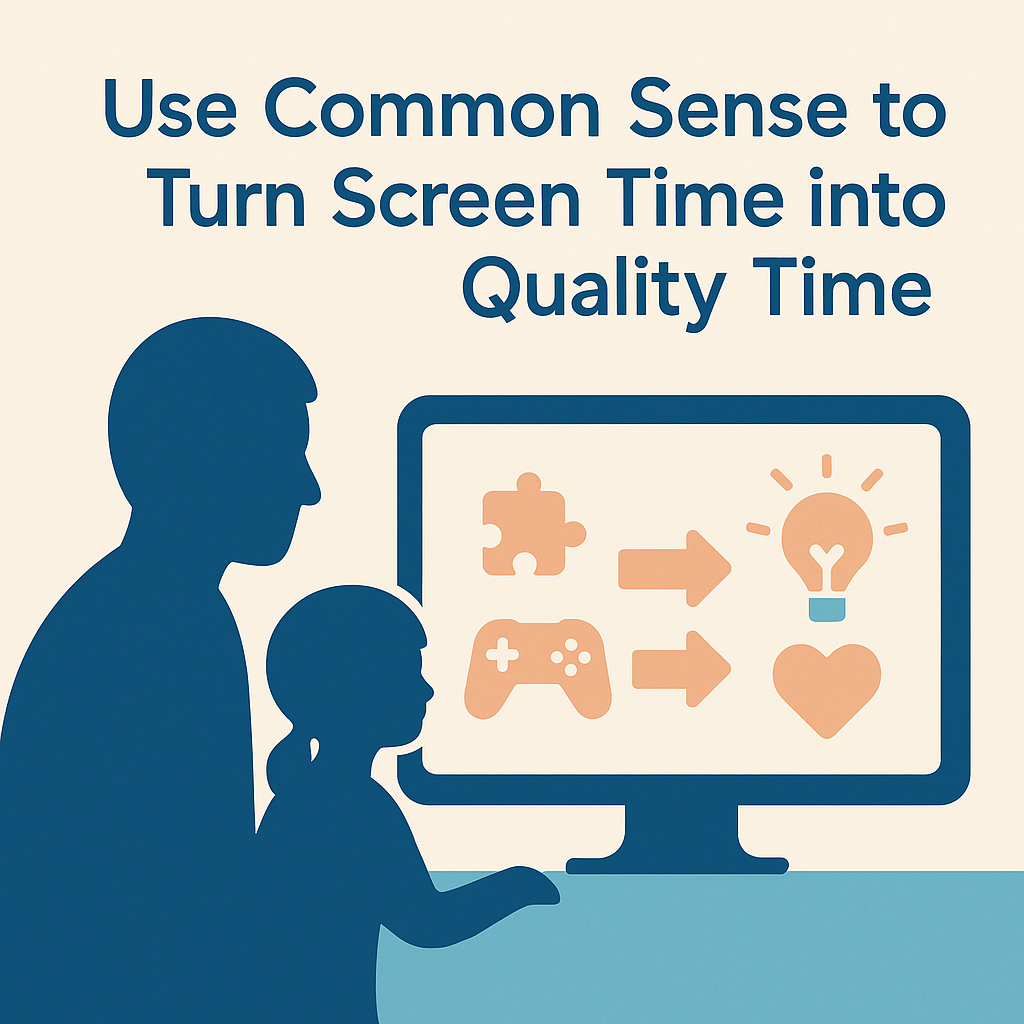1. Good News First
If your child has ever launched into a textbook tantrum over screen-time limits, you’re certainly not alone. It’s tempting to pin that behaviour and every other wobble on devices and the minutes spent in front of them. But, as in most areas of life, sweeping generalisations and neat one-liners rarely tell the whole story.
A recent BBC article reminds us that “what screen time does to children’s brains is more complicated than it looks.” In other words, reality is a lot messier than the doomsday headlines crowding your social media feed.
According to paediatrician Dr Jenny Radesky, the parent-to-parent conversation has grown increasingly judgmental, piling on guilt instead of clarifying what science can (and can’t) tell us. So let’s leave the guilt by the roadside and see what the evidence actually says.
2. All Screen-Time Is Not Created Equal
Why make these distinctions? Because content matters more than minutes. A recent study of 5,000+ children found that those who played more video games saw an average +2.5-point IQ gain over two years (sciencealert.com). Heavy social-media use, meanwhile, still tracks with anxiety, depression and sleep disruption (columbiapsychiatry.org).
3. How Smartphones Trip Us Up
A smartphone slips into a pocket and into every quiet moment. Many apps are engineered to maximise engagement, rewarding quick checks and nudging kids toward in-app purchases or viral challenges. The fallout? Fragmented focus and a constant drip of social comparison.
Computers, by contrast, invite longer, goal-oriented sessions. When a child sinks into a strategy game, they practise planning, resource management and teamwork. These are the skills many employers rank as “must-haves” for the future workforce. Research on game-based learning consistently shows moderate-to-large benefits across cognitive, social and emotional domains (frontiersin.org).
4. The School of Gaming Principal’s “Common-Sense Kit”
- Content before the clock. Thirty minutes of doom-scrolling on TikTok ≠ thirty minutes building a roller-coaster in Planet Coaster.
- Play together whenever you can. Sit beside your child, be curious, ask questions, let them teach you. Try co-op modes.
- Set boundaries, parents included. When it’s sleep time, sleep. When it’s meal time, eat and chat. Phones stay out of bedrooms, off the table and away from shared moments.
- Create a home “digicorner.” Keep the family PC and consoles in a common area. Accessible yet visible.
- Model the behaviour. Kids do notice if you doom-scroll X or Instagram between every sentence. A poor example only makes this harder.
5. How School of Gaming Can Help
Short on time to play with your child? We’re happy to fill that gap and keep you in the loop. Our trained game educators guide kids through a safe gaming universe and a caring community that centres creativity, collaboration, sociability and digital citizenship.
We deliberately avoid manipulative mobile and console titles, focusing exclusively on PC games, especially Minecraft, which nurtures the whole child. After every session parents receive a recap plus fun “home-quests” so the adventure can continue beyond the screen.
6. Final Note
Don’t stress or feel guilty about your child’s screen time. Smartphones aren’t monsters, and screens don’t transform kids into zombies. With quality content, clear boundaries and shared play, screen time can become a springboard for healthy growth.
Let’s swap fear for knowledge and give our children’s imaginations room to run wild on both sides of the screen.
PS. Check out our Minecraft Club Schedule here!
